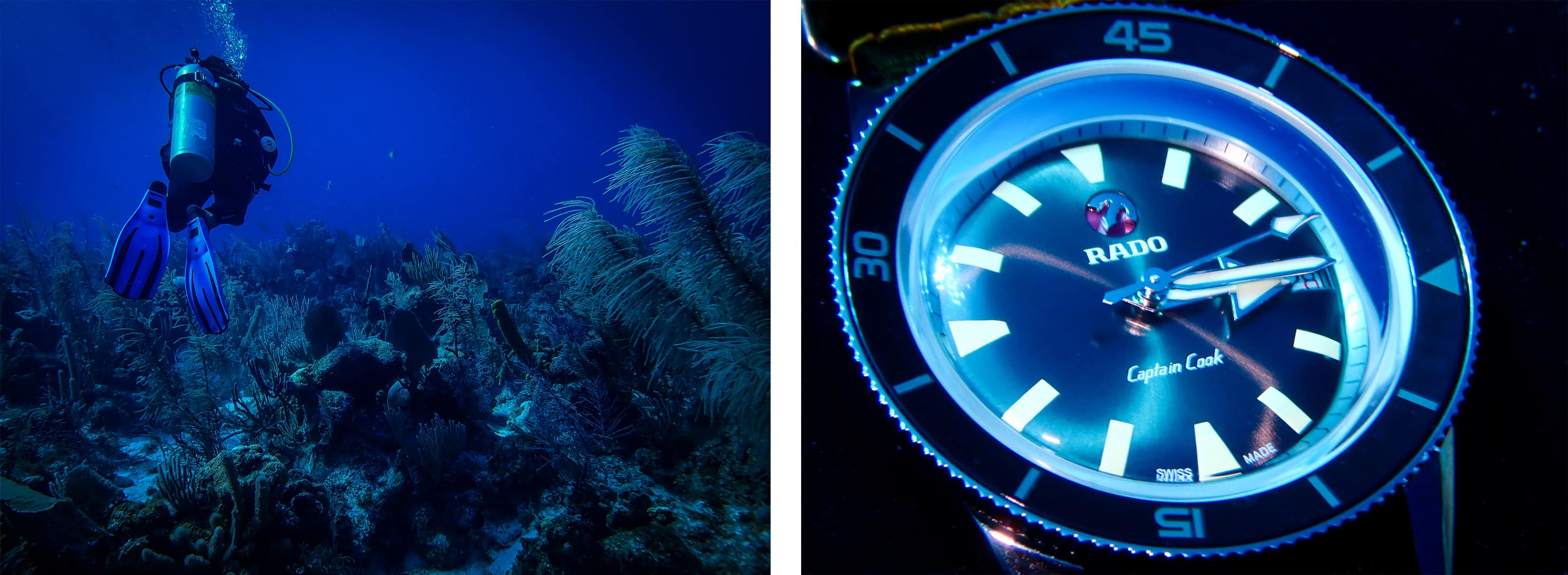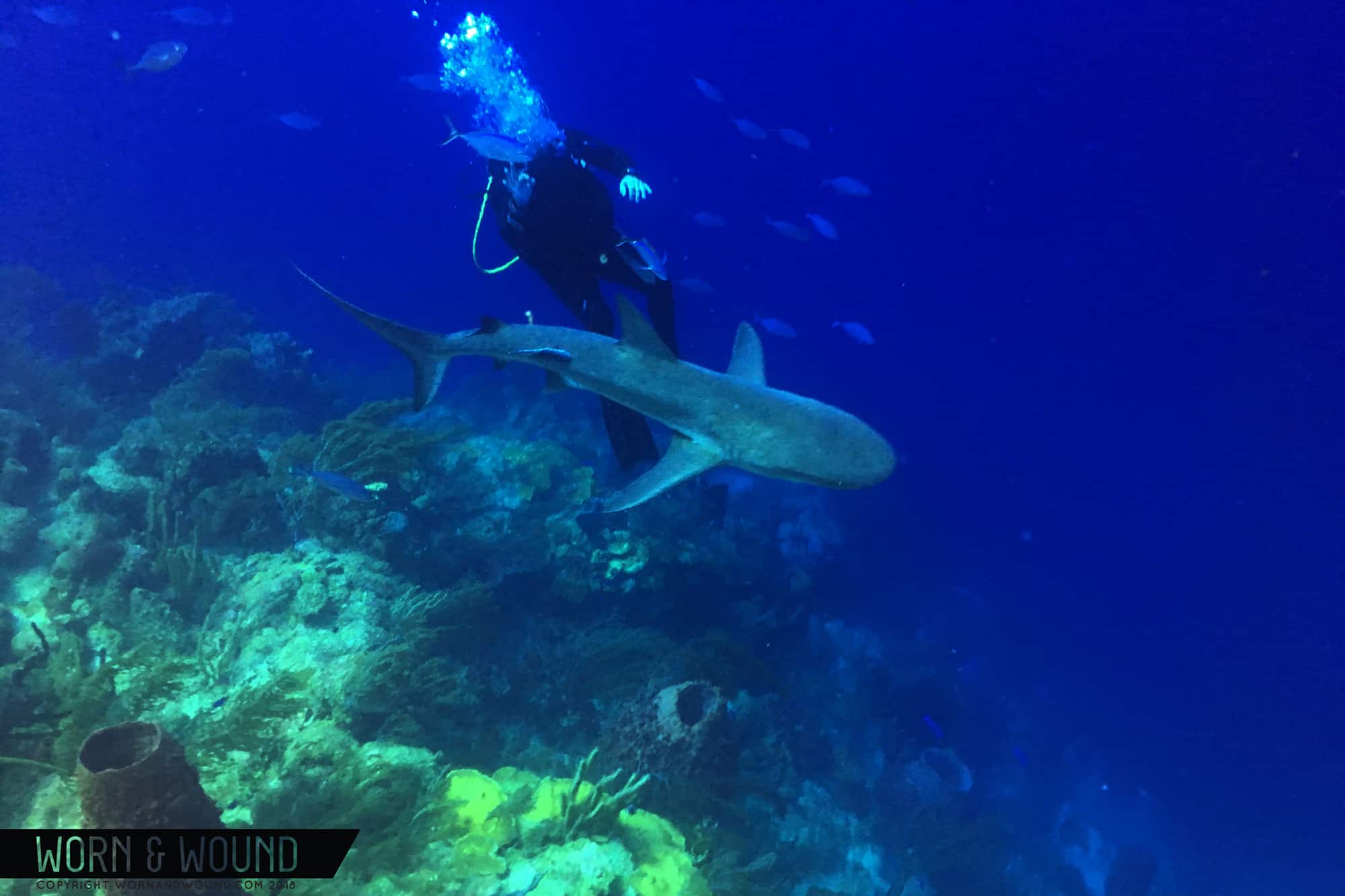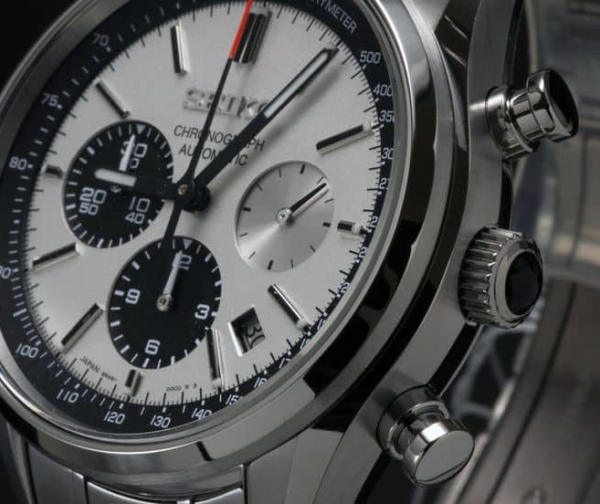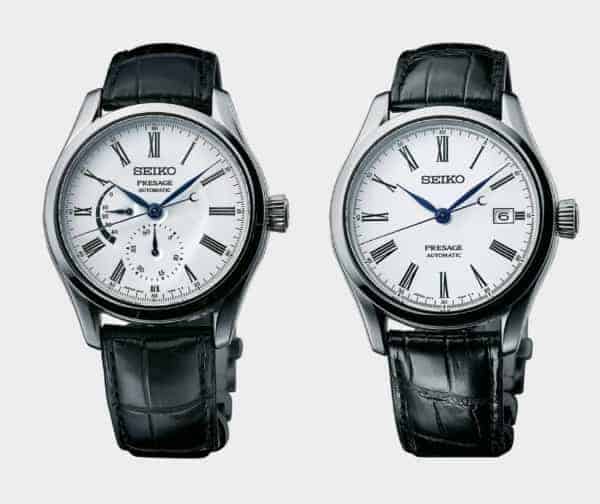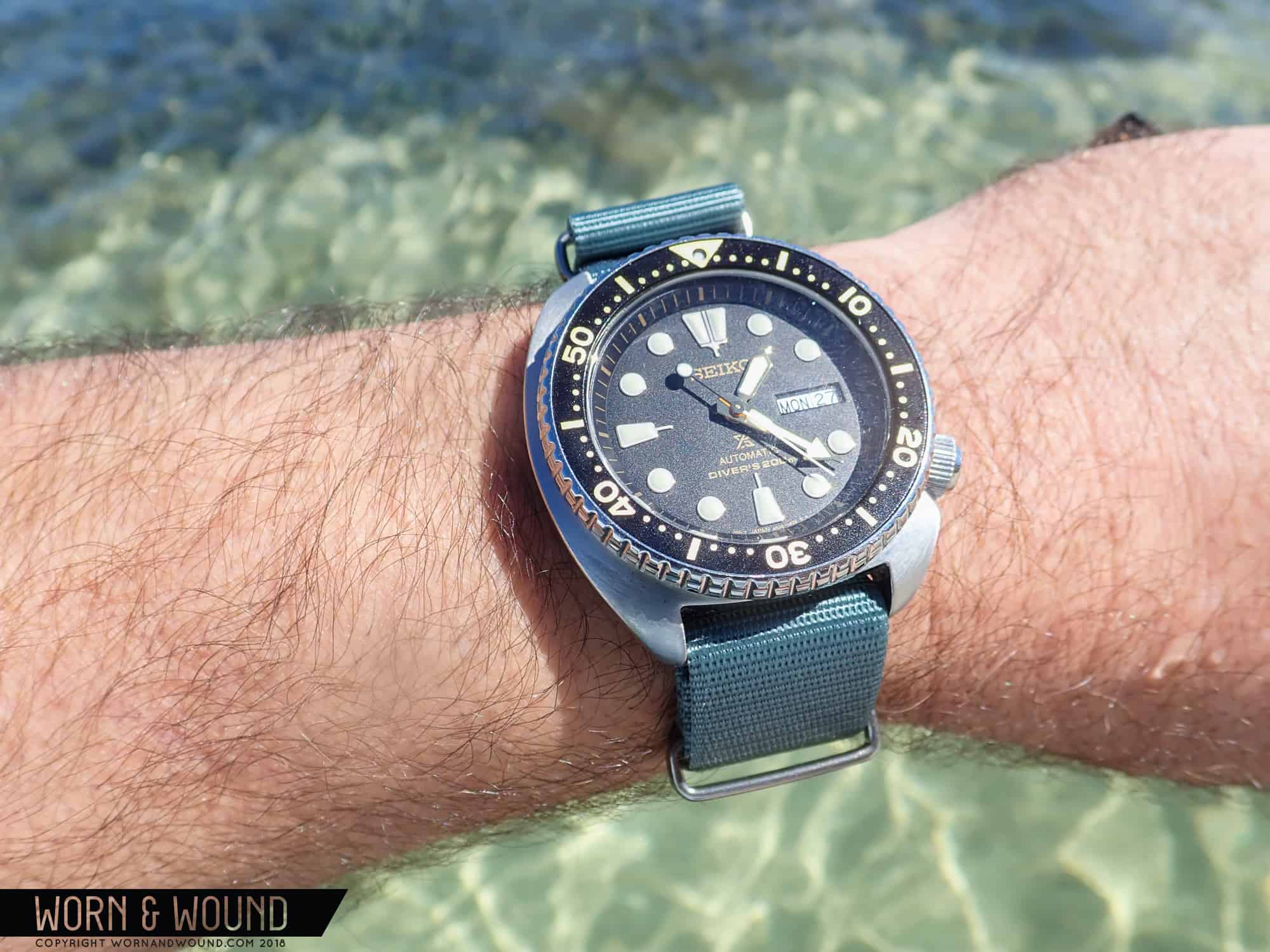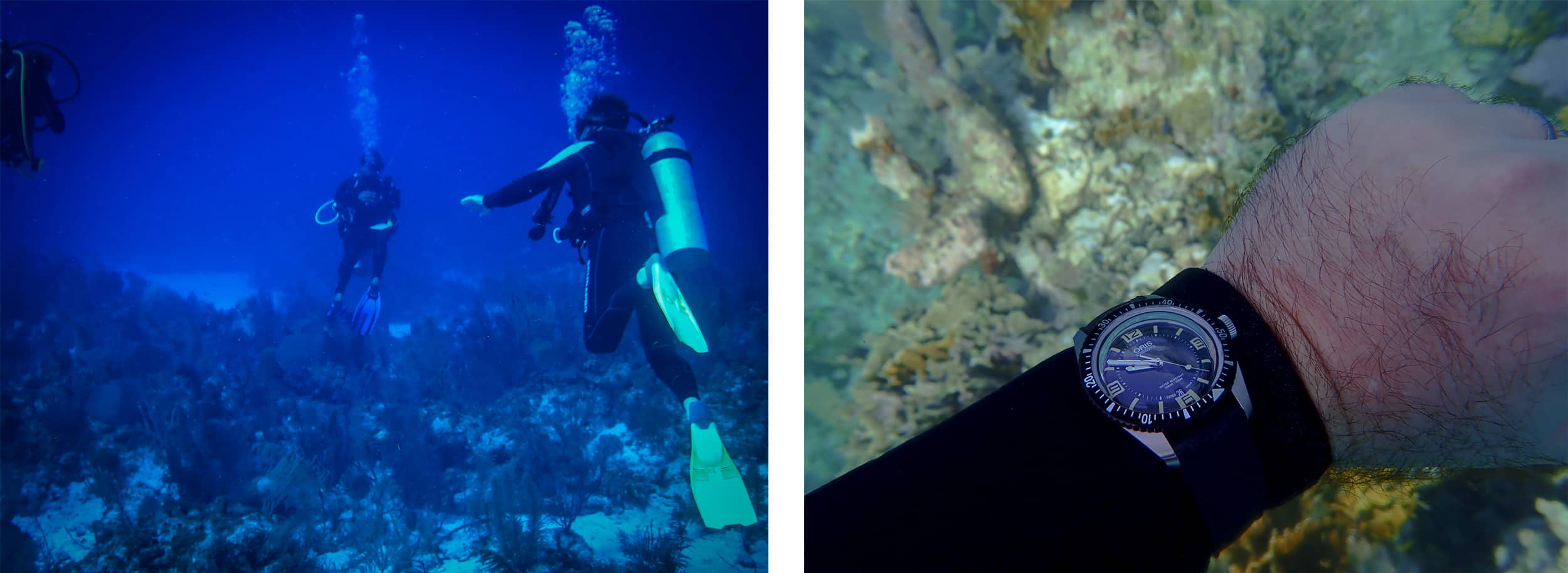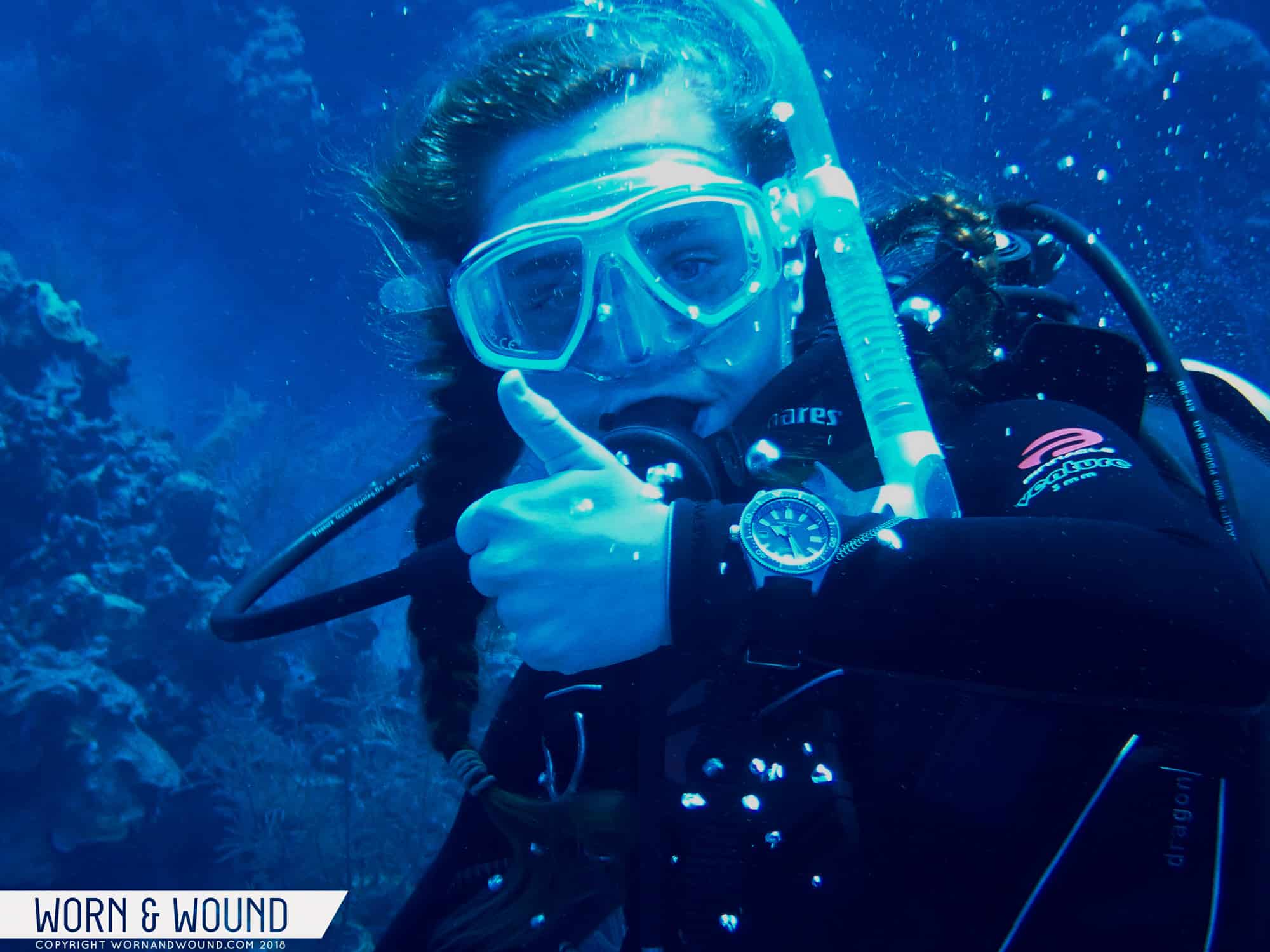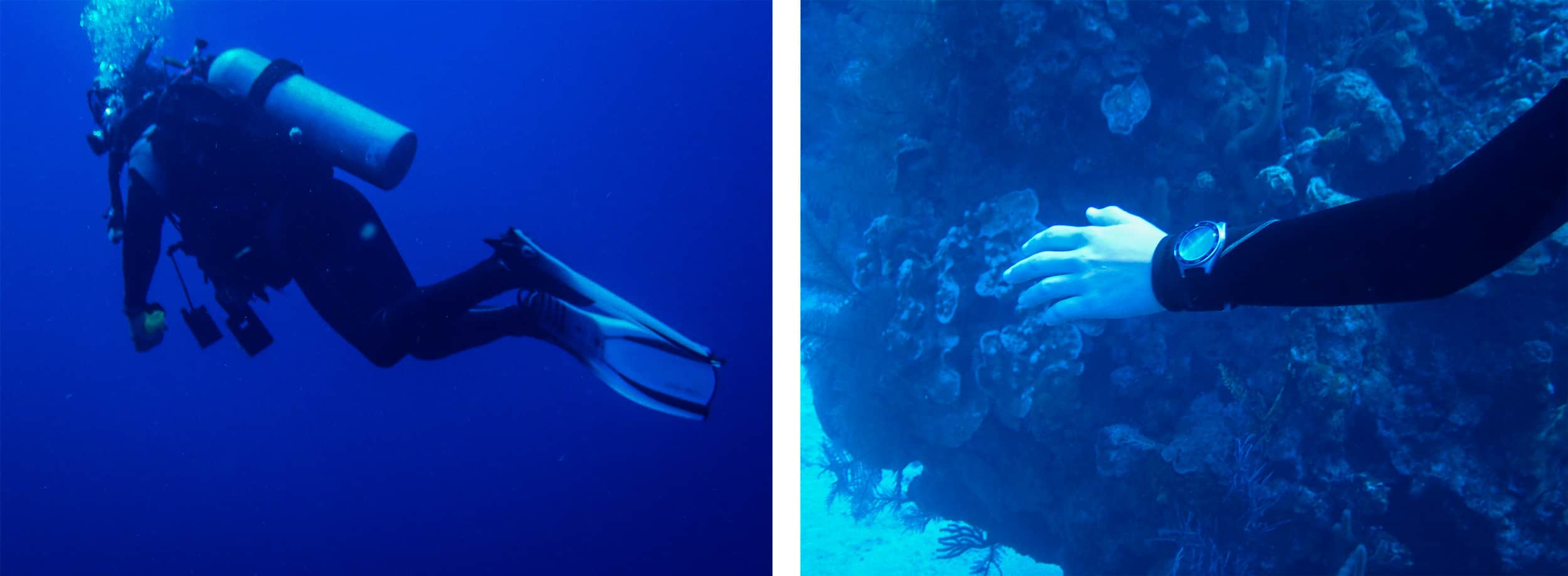I finally go SCUBA diving and am immediately vexed to learn that wearing a dive watch underwater can be considered far more pretentious than sporting one on dry land. I didn’t see that bit of irony coming when I happily hauled multiple dive watch reissues to a tiny island in Belize’s Turneffe Atoll, part of a significant coral World Heritage Site where I spent a week venturing into this incredible sport.
Indeed, if anyone groks the gratuitousness of dive watches, it’s divers themselves, all of whom use dive computers. So foreign are watches in today’s SCUBA scene that exactly zero of the many avid divers on my trip wore one, and my dive master—legitimately concerned I’d ruin the glimmering Rado Captain Cook on my wrist—reminded me to take it off as I kitted up for my first dive. I sheepishly explained, “Oh yeah, that. I’m actually going to wear a different watch each day we dive and write about them.” One of her eyebrows shot up, and then she broke into a melodic Belizean belly laugh.
Despite their presumed uselessness, the watches turned out to be helpful for timing my safety stops. Upon ascending, recreational divers hover at a depth of 15 feet for three minutes to assure that enough pressurized nitrogen has left the body. Many modern dive computers automatically start a three-minute countdown, but my rented unit had neither this function nor a stopwatch. Craftily, I relied on the old-school bezel timers, and after a couple days my fellow divers and I were signaling time confirmations back-n-forth. Eventually, an inkling of watch-pride began to surface with me after each dive.
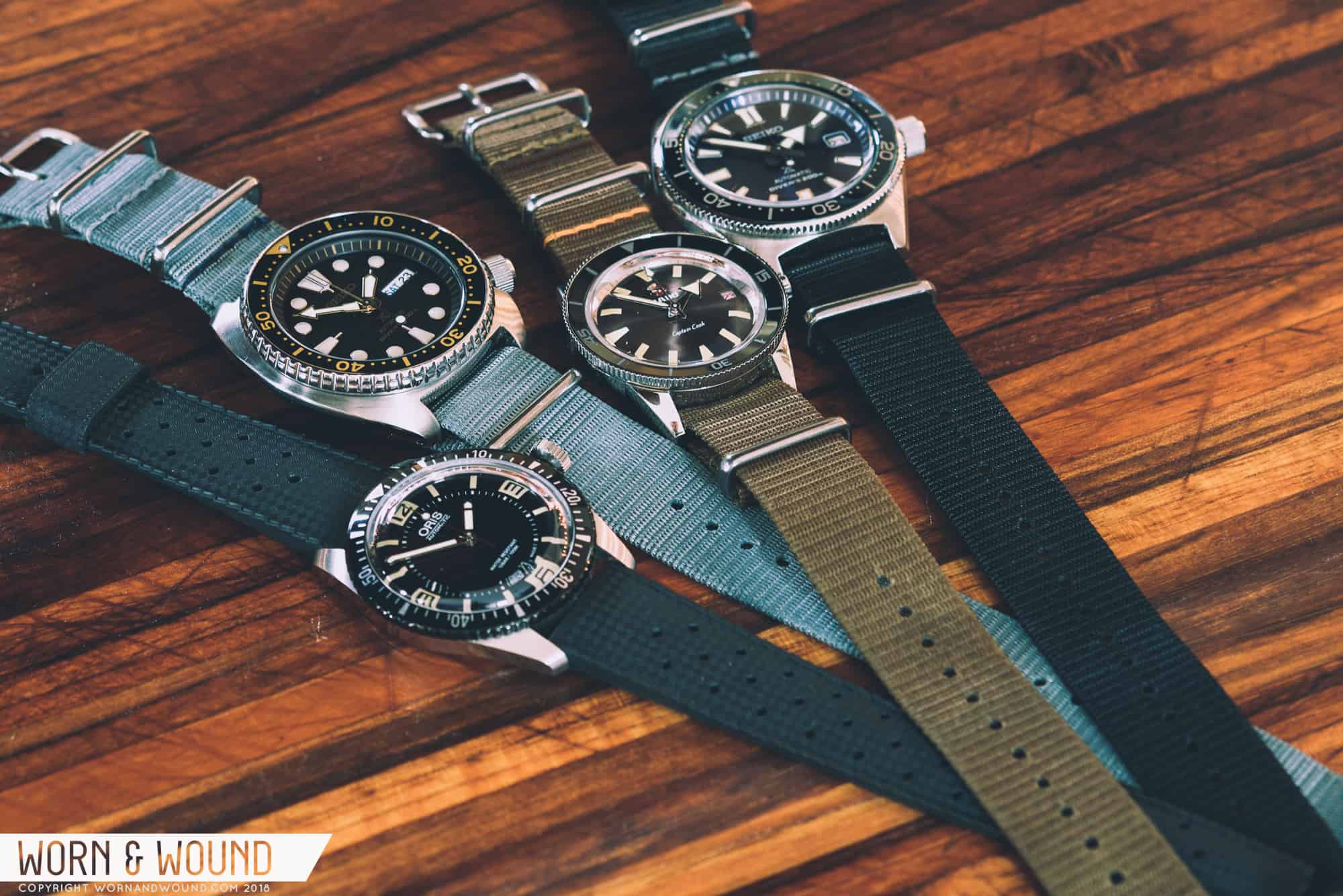
The four watches I dove with are all reissues of 60s and 70s mechanical divers, part of a trend that may very well constitute a renaissance of the era’s styling and technology. To name a few, Blancpain, Breitling, Bulova, CWC, Doxa, Longines, Omega, Oris, Panerai, Rado, Seiko, Tudor, and Ulysse Nardin have all recently resurrected mid-20th century dive models. For my trip to Belize, we rounded up four fine examples from this ever-expanding category.
Because the watches have already been amply evaluated above sea level, I’ll focus on my experiences with them underwater. I had no idea how beautiful, intriguing, useful, and downright different these anachronistic marvels would be when submerged, but I soon learned that everything changes under the sea.









 Featured Videos
Featured Videos





